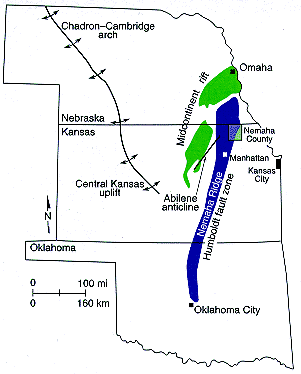The earliest, (click here) and possibly the strongest, shock reported within Kansas' borders occurred April 24, 1867. Several persons were injured, though not seriously. Plaster cracked, objects were thrown from shelves, and doors and windows were shaken at Lawrence. The earthquake was also felt strongly at Manhattan, where stones loosened on buildings and walls cracked. A heavy wave, about two feet high, was observed on the Kansas River at Manhattan. The tremor was felt over an area of 300,000 square miles in Kansas, Missouri, Nebraska, Arkansas, Illinois, Indiana, Kentucky, and possibly Ohio....
Fracking has created earthquakes along an existing and once stable fault.
September 9, 2014
The governor’s (click here) Coordinating Council on Seismic Activity will bring together researchers with policymakers and energy industry experts. Energy Secretary Michael Teague will lead the panel, which will draw on expertise from the Oklahoma Geological Survey, the Corporation Commission, the Oklahoma Energy Resources Board, the University of Oklahoma, Oklahoma State University, the Oklahoma Independent Petroleum Association and the Oklahoma Oil and Gas Association....
I fully expect Fallen to simply blame a fault like that of California on the earthquakes regardless of the findings by scientists pointing to the petroleum industry and it's frequent fracking drills.
The Humboldt Fault is a good example of the problems with fracking. It is primarily a stable fault with no seismic activity. On a rare occasion there is some movement. The increased drilling that accompanies fracking is creating it's own instability while also loosening existing faults.
The truth is the earthquakes occurring with frequency in the country and probably around the globe is due to the ventures of the petroleum industry. When a well is drilled it is permanent and the damage done in regard to that drilling cannot be reversed.
The increased seismicity in the area is also a reason to stop building oil pipelines, either above or below ground.
